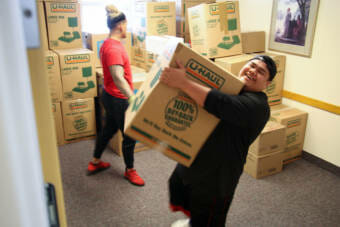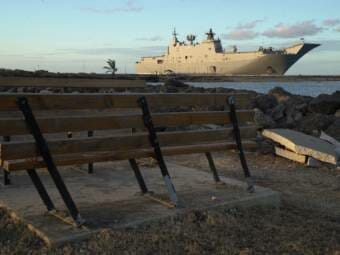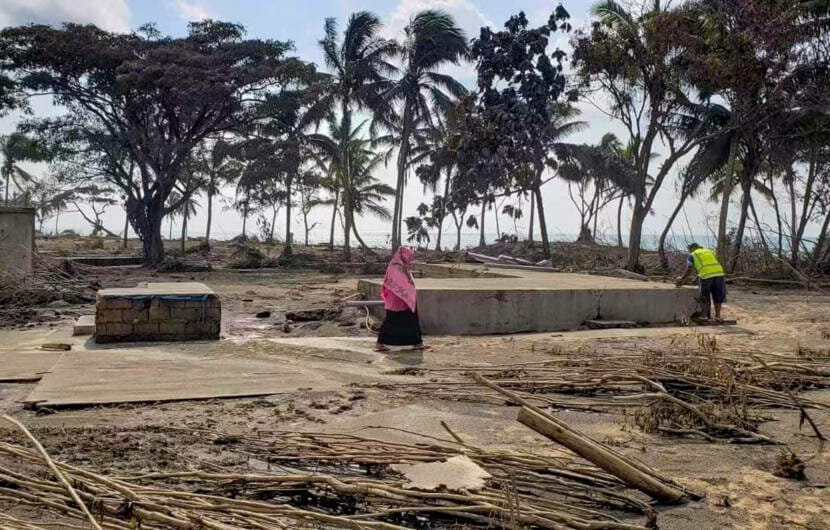
How do you bring aid to a disaster-struck nation when you don’t want to let any outsiders in?
That’s the pandemic dilemma faced by Tonga following the eruption of a massive underwater volcano on Jan. 15. International aid is on the way, but efforts are hamstrung by the desire to keep the coronavirus out of the remote Pacific island nation, which consists of some 170 islands, many uninhabited, and has a population of about 100,000.
Tonga has recorded just one COVID-19 case since the pandemic began, and even though the country has vaccinated over 60% of its population, officials say they are wary of letting international visitors in lest they bring the virus with them and spread it throughout the community.
As a result, Tonga’s borders remain closed and all pandemic protocols remain in place, including a three-week quarantine for anyone arriving from outside the country despite the crisis in the wake of the eruption of the Hunga Tonga-Hunga Ha’apai volcano that killed three people and left behind extensive tsunami damage. The natural disaster not only covered much of the archipelago with a thick blanket of volcanic ash but also plunged Tonga into a phone and internet blackout by damaging an underwater fiber-optic cable.
Respecting pandemic precautions
One solution: The Tongan government has agreed to “contactless” aid delivery with New Zealand and Australia.
Tonga’s High Commissioner to Australia Curtis Tu’ihalangingie told ABC radio on Tuesday that he appreciated the two countries’ understanding.
“We need to follow the COVID-19 protocols to keep the people in the population safe rather than us setting a system and there’s a tsunami of COVID hitting Tonga,” he said.
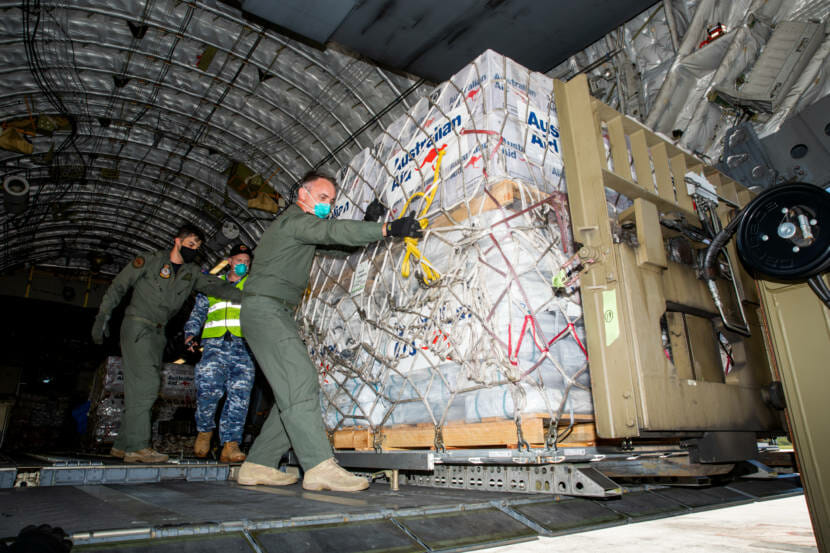
A New Zealand air force plane was the first to make a contactless shipment when it arrived on Thursday at the airport near the capital Nuku’alofa — but only after the Tongan armed forces spent days sweeping the volcanic ash off the runway by hand.
Speaking to the press in Wellington the same day, Rear Admiral Jim Gilmour, the Commander Joint Forces New Zealand, said the plane was carrying relief supplies such as food, drinking water (a critical need), generators and personal hygiene kits. He went on to say that those supplies would be offloaded on the tarmac and then the aircraft would return to New Zealand the same evening — in adherence with Tonga’s COVID-19 restrictions.
More aid has since arrived in Tonga, including a ship from New Zealand.
But there have been glitches. An aid flight out of Australia had to turn back after a crew member tested positive during the flight for COVID-19. Officials said the supplies were moved to another flight that took off on Friday.
Humanitarian agencies also say they will do everything they can to respect Tonga’s strict COVID-19 protocols.
“If there’s a need for quarantine of the relief items, the need for quarantine of the team, we will also consider that,” Sainiana Rokovucago, partnership and program director of the International Federation of the Red Cross, told NPR. Rokovucago said the IFRC plans to put a team on the ground when they can but, for now, they’ve mobilized volunteers already based in Tonga.
UNICEF also said it would abide by the country’s pandemic rules.
“UNICEF will work with the government, civil society organizations, and other development partners to ensure immediate response efforts on the ground, which includes providing clean water and emergency health supplies for children and families affected,” UNICEF Pacific representative Jonathan Veitch said in a statement Monday.
And this won’t be the first time Tonga has turned to remote assistance. Contactless delivery is how UNICEF was able to help deliver COVID-19 vaccines, Vietch told the BBC.
Meanwhile, in-person aid is not completely off the table, says Jonathan Pryke, Pacific Island program director at the Lowy Institute, a Sydney-based think tank. Pryke says the Tongan government, after getting a grasp on the full scale of the damage wrought by the volcanic eruption, will have to just make a call on whether or not it’s worth it to let international aid groups in to help out on the ground.
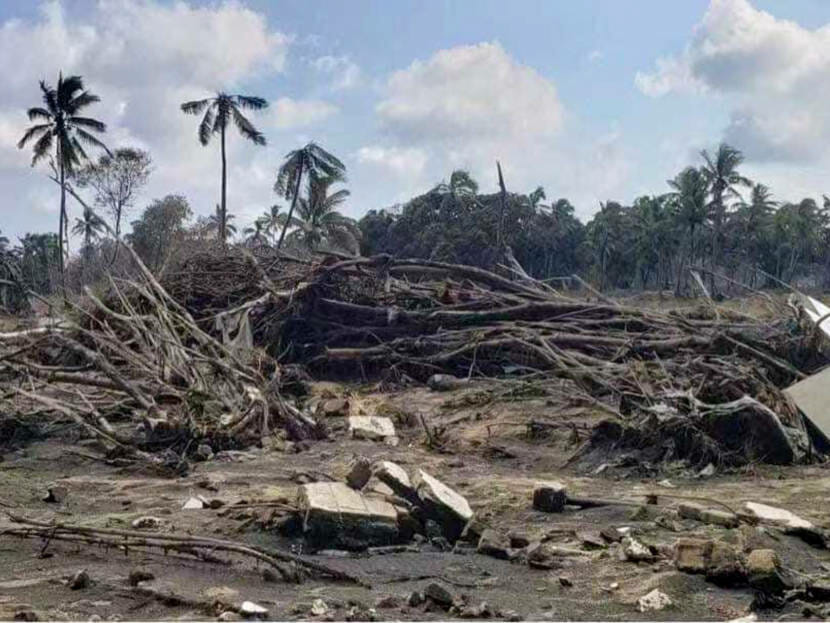
The origins of Tonga’s pandemic philosophy
This emphasis on keeping disease out is rooted in Tongan history.
Years ago, Westerners brought diseases like smallpox, the plague and measles into the country, says Pryke.
“All Western diseases have really had a terrible impact on countries like Tonga in the past, so they don’t need much of a push to react when they hear about a pandemic abroad that could potentially cause devastating health impacts back at home,” Pryke said.
What’s more, the island’s remoteness, which has previously been an economic disadvantage to the country, became a great advantage during the pandemic, says Pryke.
“Tonga was able to quickly put the barriers up between itself and the outside world,” Pryke said. “So it implemented quarantine systems to stop international travel and to closely monitor freight coming in and out of the country.”
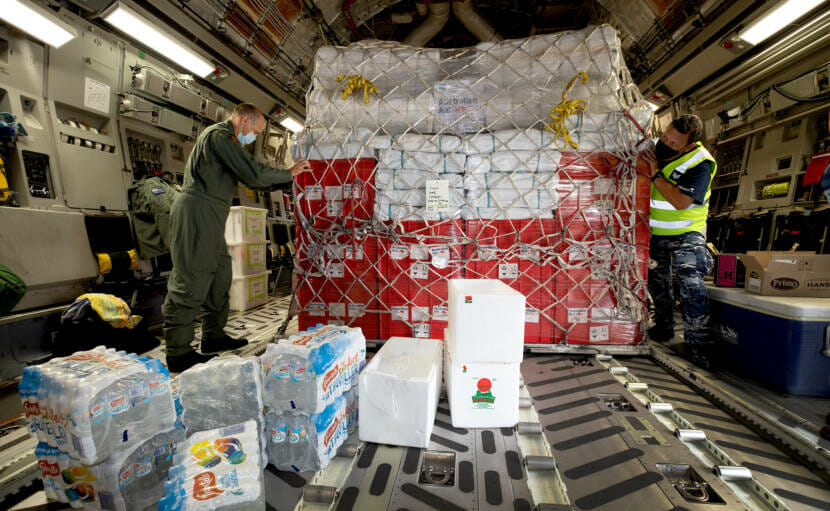
(Photo by LACW Kate Czerny/Australian Defence Force via Getty Images)
The greatest need: drinking water
Humanitarian groups NPR spoke with all said the top priority right now is providing clean drinking water for Tongans.
“They rely mainly on boreholes,” says Rocovucago of the Red Cross, referring to holes drilled into underwater aquifers.
“So with the volcanic eruption, the volcanic ash fall would have affected the drinking water as well as the tidal wave that happened after the eruption would have inundated [the boreholes] with salt water,” she says.
And while the ash itself isn’t so dangerous, what happens when it mixes with water can be.
“The ash is coated with mineral salts and they’re mainly sulfur, chlorine and sometimes fluorine,” says University of Auckland volcanologist Shane Cronin. “And what happens when water gets onto the ash, is that it dissolves up these salts and creates acid.”
These acids, Cronin said, make the water less palatable. And larger concentrations in the water could lead to stomach problems, he says.
Tongan officials have already confirmed that drinking water is being contaminated by the fallen ash. And if the ash is left to sit on the ground and vegetation for too long, experts say it could harm crops and livestock as well.
Drinking water isn’t the only pressing need. Humanitarian experts cite the need to evacuate Tongans from homes that were damaged and find new shelter for them as well as the importance of providing food for those unable to feed their families in the aftermath of an eruption that scientists say was “more than 500 times the power of the bomb dropped on Hiroshima, Japan, in the final days of World War II.”
Copyright 2022 NPR. To see more, visit https://www.npr.org.9(MDEwMjQ0ODM1MDEzNDk4MTEzNjU3NTRhYg004))

